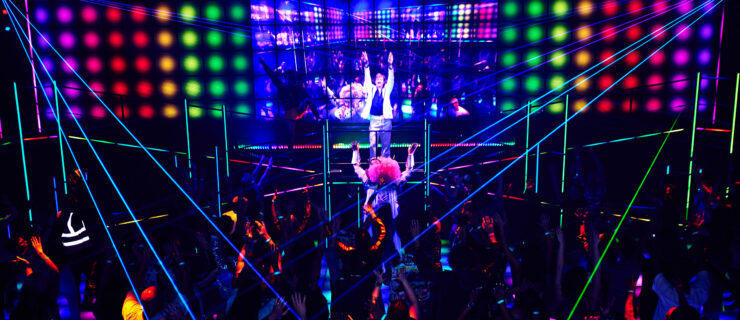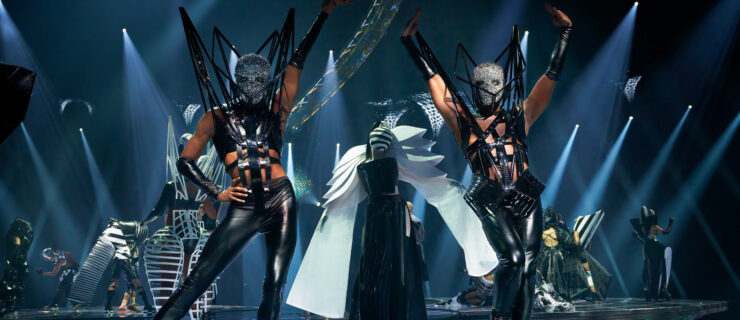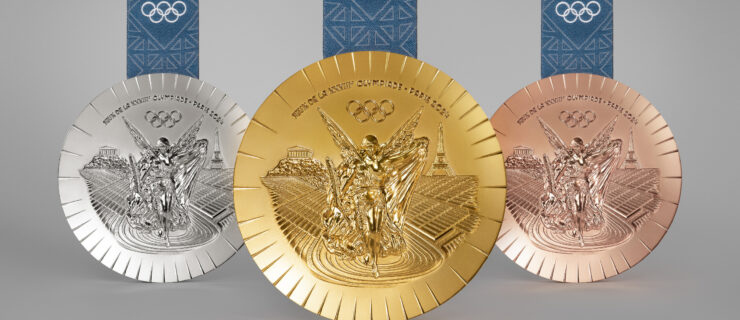Men On Pointe
For girls brought up on The Nutcracker and Swan Lake, donning a pair of pointe shoes is a rite of passage. That’s not the case for boys. But ever since 1832, when Marie Taglioni magically rose onto her toes in La Sylphide, scores of men have tried on the satin slippers. Today, a courageous handful of them are wowing audiences with their comic whimsy and bravura technique. Some, like Les Ballets Trockadero de Monte Carlo dancer Robert Carter, can even whip off 32 fouettés! Here, DS talked to four men about their unique pointe histories.
Robert Carter
tried on pointe shoes at age 12, two years after seeing Les Ballets Trockadero (an all-male company that restages classics with men in the ballerina roles) perform. “I always begged the girls for their old shoes,” he says. One day, Carter’s ballet teacher Robert Ivey “busted” the intrepid dancer experimenting with pointework. “If you want to do that,” Ivey said, “get into pointe class.” For four years, three times a week, Carter studied pointe (until a Joffrey Ballet scholarship took him from his native South Carolina to NYC). Later he joined Dance Theatre of Harlem’s ensemble, but his love for pointe remained—and became his life’s work when he joined the Trocks in 1995. “This is it!” he remembers thinking.
As a Trock, Carter performs a repertoire modeled after Petipa and Balanchine. The greatest challenge, he says, is trying to emulate a lithe female ballerina—whose proportionally smaller body mass helps give the illusion that she’s floating. You also have to “know exactly where your center of balance is,” he explains. Working so precisely has lengthened his muscles and strengthened his feet. A virtuoso technician, Carter is now focusing on showing his musicality, refining transitional steps on pointe and emphasizing his physical grace.
Julio Bragado-Young
also took pointe classes in his early teens, for three years, three times a week. The work started when his ballet teacher, Luis Fuente, caught him teasing his female classmates as they put on their shoes. His punishment: pointe class. “I never,” he says, “made fun of women again.”
He didn’t expect this training to come in handy when he joined American Ballet Theatre in 1999. But in 2002, he was given the opportunity to perform the role of Bottom in Frederick Ashton’s The Dream. The role includes a grueling pointe variation. “While wearing an enormous donkey head,” says Bragado-Young, “I have to leap from one foot to the other on pointe!” Dancing it is like a battle for “survival of the fittest,” he adds. “You tighten up your foot and ankle as much as you can and pray that you’re going to get through.” Though he won kudos from the critics, the Cleveland-born corps member has no plans to don pointes permanently: “The faster I could take the pointe shoes off, the better! But I had so much fun doing it.”
Raffaele Morra
started dancing on pointe because his ballet teacher Giulio Cantello said that to become a dancer, “You have to do everything.” The Italian-born Morra, who joined the Trocks in 2001, first thought the tradition was impossibly difficult—in fact, after his first pointe class at 22, he vowed, “Never again!” But Morra grew to love the work because he saw the expressive possibilities of pointe’s floating, mystical quality. Since the majority of his training was in soft shoes, Morra has no illusions that he’ll reach technical perfection. “We men have to invest our roles dramatically,” he explains, “because we lack technique.” Nonetheless, Morra doesn’t shirk any chance to improve: He takes extra pointe classes, watches Vaganova documentaries and recently choreographed a ballet for the Trocks. “Dancing on pointe is like being a stunt double,” he says. “There’s only one centimeter of room for a mistake.” But he finds this exactitude intensely absorbing, emotionally fulfilling and a means to becoming a better ballet dancer.
Never encouraged to work with pointe shoes in ballet class, Ian Archer-Watters took matters into his own hands. “I secretly ordered my first pair when I was 13,” says the Les Ballets Grandiva dancer. “I wrapped them in three or four plastic bags so no one would know what they were.” He worked on pointe at night in empty studios, first at the Alexandra School of Ballet in his hometown of St. Louis, MO, then at the San Francisco Ballet School, and finally at Fort Worth Ballet in Texas (now Texas Ballet Theater), where he was a corps member. “The shape of my legs completely changed,” he says.
Archer-Watters later left ballet to earn a liberal arts degree, and spent time working as an arts administrator with New York City Ballet. But in 2005, 25 years after seeing a photo of the Trocks in a calendar and eight years after leaving behind traditional male roles, Archer-Watters found his place in dance. “I came out,” he says, “as a Grandiva dancer.”
So what’s out there for “pointe men”? Aside from The Dream, there are male pointe roles in Ashton’s Tales of Beatrix Potter and Rudolf Nureyev’s Cinderella. And who knows how soon contemporary ballet will have men on pointe in a completely abstract context! Maybe in years to come these dancers will provoke not just laughter, but awe.



